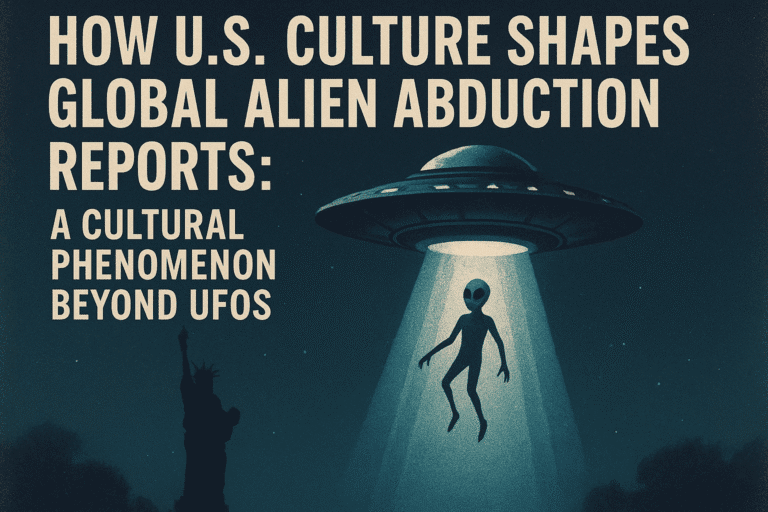This website is in the works! Things will get fixed with time.
The concept of predictive programming posits a fascinating and often unsettling theory: that the media we consume—from blockbuster movies and popular TV shows to video games—isn’t just entertainment, but a subtle, pervasive mechanism for social conditioning. It suggests that fictional narratives can introduce ideas, technologies, or profound societal shifts to the public before they are fully implemented or become prevalent in reality. The underlying aim, according to this theory, is to subtly prepare and condition people to accept these future developments, thereby diminishing potential shock, resistance, or even critical thought when these changes eventually manifest in our daily lives.
The Core Idea: Softening the Ground for the Future’s Unfolding Realities
At its heart, predictive programming is a deep dive into the psychological phenomenon of pre-conditioning. Imagine a society, unknowingly and incrementally, being exposed to highly advanced surveillance technologies, the pervasive integration of artificial intelligence into every facet of life, or even radical shifts in social structures and governance, all depicted within the realm of popular fiction. By the time these once-fictional elements transition into concrete realities, the initial shock, the natural human resistance, or the urge to question their implications might be significantly diminished. This is because, according to the theory, we’ve already “seen” them play out, often in dramatic or even entertaining contexts, making them feel less alien and more a part of an expected future.
Proponents of this theory frequently point to historical examples where fictional works appeared to possess an uncanny foresight, seemingly foreshadowing real-world events, profound technological advancements, or major cultural shifts. While skeptics often attribute these instances to simple coincidence, the boundless nature of creative foresight, or merely the cyclical re-emergence of enduring human concerns and anxieties, those who subscribe to the theory of predictive programming perceive a more deliberate, orchestrated pattern. They argue that the sheer consistency of certain themes across seemingly disparate media forms, preceding their real-world emergence, is too significant to be dismissed as mere chance. It implies a deeper, often hidden, agenda at play, leveraging the power of narrative to shape collective consciousness.
Examples in Media, Fact or Calculated Fiction?
While definitive, irrefutable proof of intentional, top-down predictive programming remains elusive and is the subject of much debate, a multitude of examples are consistently cited by those who subscribe to the theory. These instances serve as powerful anecdotal evidence for believers, showcasing a striking congruence between fictional foresight and future reality.
- Science Fiction’s Prescient Visions: Many seminal works of science fiction are frequently referenced. George Orwell’s dystopian masterpiece Nineteen Eighty-Four, published in 1949, vividly depicted a world dominated by pervasive government surveillance (“Big Brother”), constant monitoring through “telescreens,” and the chilling concept of “thoughtcrime.” Decades later, with the advent of omnipresent CCTV, digital tracking, and the analysis of online behavior, aspects of Orwell’s grim vision seem eerily prescient. Similarly, films like Steven Spielberg’s Minority Report (2002) introduced concepts of “pre-crime” based on predictive algorithms and pervasive data collection to anticipate criminal acts, a notion that resonates strongly with contemporary discussions around predictive policing and AI-driven surveillance. Other examples include the introduction of advanced robotics, AI companions, and immersive virtual reality environments in countless films and video games over decades, potentially contributing to a gradual desensitization and normalization of their widespread adoption in daily life.
- Disaster Scenarios and Societal Preparation: A more unsettling application of the theory suggests that certain disaster movies or television shows depicting large-scale pandemics, devastating natural catastrophes, or profound societal collapses might, either intentionally or unintentionally, serve to prepare or condition the public for how to react, or what to expect, during actual crises. The theory proposes that by portraying chaos, government responses, or the public’s acceptance of certain restrictions in a fictional context, the actual shock and resistance during a real event might be lessened.
- Technological and Social Integration: Beyond grand narratives, the subtle integration of specific technologies or social norms into popular entertainment is also cited. The increasing portrayal of smart home devices, wearable tech, or even evolving social attitudes towards privacy in a casual, everyday context within TV shows or movies, could, in this view, normalize technologies and concepts that were once considered invasive or futuristic. This continuous drip-feed of the “new normal” helps to lower the collective guard against rapid technological advancement and its broader societal implications.
It is paramount to acknowledge that the line between genuine predictive programming and simple artistic imagination, the natural progression of technological ideas, or even the cyclical nature of human hopes and fears, is often deeply blurred. Nevertheless, the consistency of certain thematic reappearances across diverse media prompts critical inquiry into the underlying forces shaping our perception of the future.
Engineering Your Next Thought and Purchase ????
The theory of predictive programming takes on a new, more immediate, and arguably more insidious dimension in the current digital age, specifically with the advent of sophisticated algorithms. Here, the “conditioning” is not just through fictional narratives but through the very systems that deliver our information, entertainment, and commercial interactions. These algorithms are not merely “predicting” what you might want or think next; some argue they are actively “engineering” your next thought, your next purchase, or your next social action.
- The Echo Chamber Effect and Thought Control: Platforms like YouTube, Netflix, Facebook, Instagram, and TikTok operate on highly advanced recommendation engines. These engines tirelessly analyze vast amounts of your data – every click, every view, every pause, every search query, every interaction with content. Based on this intricate web of past behavior, they predict with remarkable accuracy what content you are most likely to engage with next. This creates an incredibly personalized “filter bubble” or “echo chamber,” where you are primarily, if not exclusively, exposed to information and viewpoints that confirm your existing beliefs, reinforce your biases, or subtly push you towards specific products, ideas, or even political ideologies. The danger lies in the gradual erosion of critical thinking, as exposure to diverse perspectives diminishes, and the individual’s worldview becomes increasingly shaped by the curated digital stream.
- Precision Targeted Advertising and Desire Creation: The algorithms behind targeted advertising go far beyond simple demographics. They analyze an unprecedented amount of your data—your precise location, Browse history, purchase patterns, expressed interests, and even inferred emotional states based on your online interactions—to serve you highly specific advertisements. This isn’t solely about selling products; it becomes a powerful tool for subtly influencing your desires, shaping your perceived needs, and subtly guiding your consumer behavior in ways you may not consciously register. The advertisements presented are not just responses to your existing desires but can actively cultivate new ones, subtly nudging you towards a specific lifestyle or a particular set of values.
- Information Bubbles and Reality Distortion: By relentlessly prioritizing certain content, news articles, or viewpoints while simultaneously downplaying or suppressing others, algorithms possess the unprecedented power to sculpt your entire worldview. This can lead to a profoundly skewed perception of reality, where events are understood only through a specific lens, and exposure to diverse perspectives or alternative facts is severely limited. This constant, tailored stream of information can make individuals remarkably susceptible to specific narratives, whether those narratives are intentionally placed by external actors or simply an emergent byproduct of the algorithm’s design to maximize engagement. The “prediction” of your next thought or purchase thus becomes the active “engineering” of it, as the algorithm constantly feeds you content designed to elicit a desired response, thereby subtly shaping your cognitive landscape.
For a deeper dive into how AI might be manipulating your choices:
- http://www.youtube.com/watch?v=tV5o_fm7Yeg ->How AI Is Manipulating Your Choices Right Now: The Invisible Algorithms Shaping Your Life by Vantage Aditya
- http://www.youtube.com/watch?v=IjcQNo5rGFA ->You’re Not In Control: The Algorithm Decides Everything. by MindTwist
Conclusion: A World of Unseen Files and Programmed Perceptions
Whether through the grand, immersive narratives crafted by Hollywood and the gaming industry, or the intricate, continuous calculations performed by unseen algorithms that govern our digital lives, the concept of predictive programming urges us to consider the profound and pervasive influence of media and technology on our perceptions, our beliefs, and ultimately, our actions. It compels us to ask a deeply unsettling question: Are we truly forming our own thoughts, independently arriving at our own conclusions, and making truly free choices, or are they, in some subtle yet undeniable way, being pre-programmed, engineered, and guided by the unseen forces that meticulously shape both our digital and cultural landscapes?
Understanding this complex and often controversial theory encourages a far more critical and discerning consumption of information. It prompts a deeper awareness of the invisible hands that might be guiding our collective future, shaping our desires, and influencing our worldview. In an age of unprecedented connectivity and algorithmic sophistication, maintaining individual autonomy and cultivating genuine critical thought becomes not just a personal endeavor, but a vital safeguard for a truly free and informed society.








